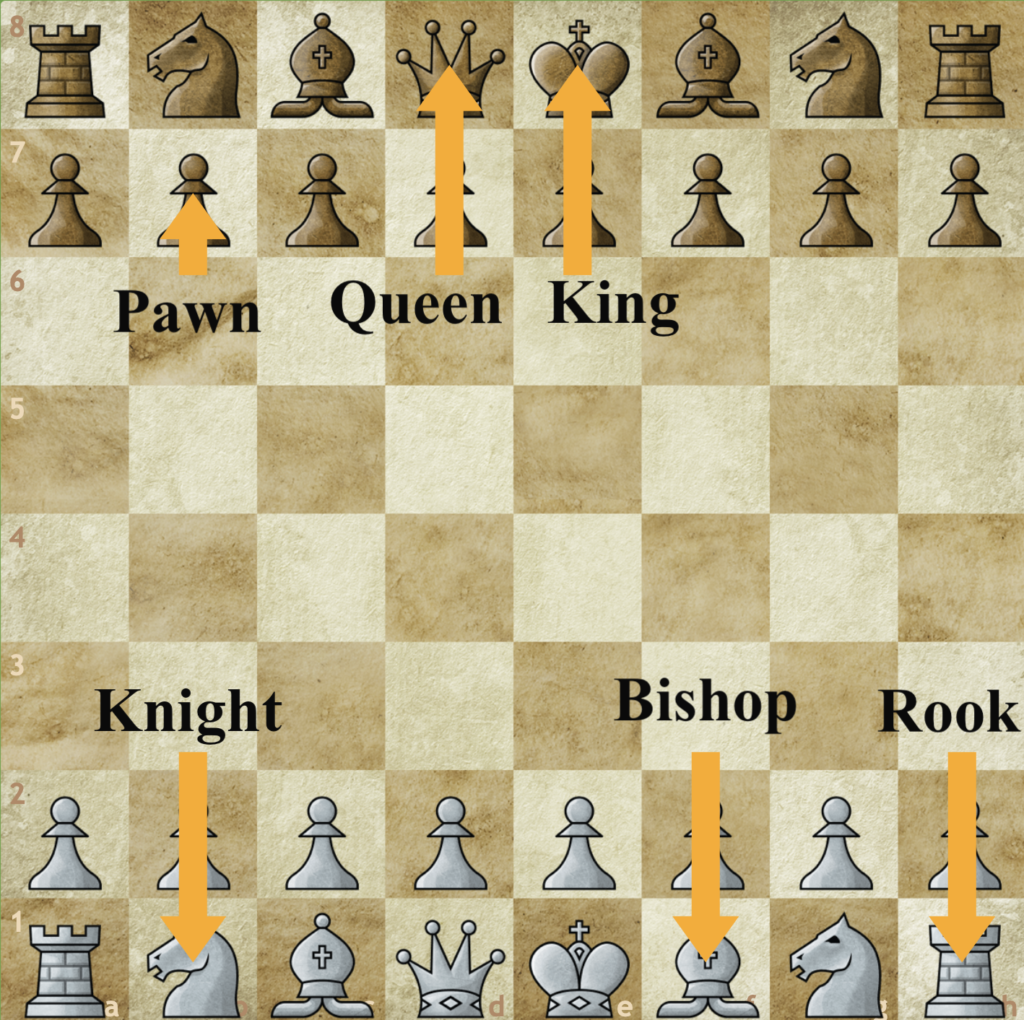

The queen cannot "jump" over any piece on the board, so its movements are restricted to any direction of unoccupied squares.The queen can move in any direction on a straight or diagonal path.The queen can move forward or diagonal in any direction. Each player starts out with one queen piece (although any pawn that makes it to the other side of the board can be traded in for another queen). The queen chess piece is like a combination of the Rook and Bishop chess pieces. The bishop can take any other piece on the board that is within its bounds of movement.

The bishop piece cannot move past any piece that is obstructing its path.The bishop can move in any direction diagonally, so long as it is not obstructed by another piece.Between both pieces, you can cover the entire board, but one piece can only cover one half of the board, only the colors of squares it started the game on. Each player starts out with two bishop pieces, each one residing on its own color of square. The bishop chess piece is stuck moving in diagonals. The Knight piece can skip over any other pieces to reach its destination position.The Knight piece can move to any position not already inhabited by another piece of the same color.The Knight piece can only move to one of up to eight positions on the board.The Knight piece can move forward, backward, left or right two squares and must then move one square in either perpendicular direction.The piece moves in a shape similar to the uppercase "L". In fact, its movement is a very specific movement. Unlike Rooks, Bishops or Queens, the Knight is limited in the number of squares it can move across. The Knight chess piece moves in a very mysterious way. This is sometimes (very painfully) called the 'horsey' by people who never play chess I have one thing to say to you. This is a move where the King piece and the rook piece work together, allowing the player to move two pieces at the same time. The rook piece is the only piece on the board that can participate in a "castling" move with the King piece. The rook piece can move anywhere from 1 to 7 squares in any direction, so long as it is not obstructed by any other piece.


The purpose of this additional string is to use it conveniently to tell which color turn is this (shown on top right) Status - to show error warning or instruction Remains -1 till legal source square is clicked by the player, upon which sourceSelection stores the clicked index SourceSelection -1 when nothing selected. Filled as white pieces fallīlackFallenSoldiers - same as whiteFallenSoldiers but for black pieces Squares - initialized with the help of initialiseChessBoard() helper function 32 null, 32 pieces (16 of each player) State and handleClick logic further explained: State Body Chess Icons And Favicon ( extracted ) By en : User : Cburnett, via Wikimedia Commons


 0 kommentar(er)
0 kommentar(er)
